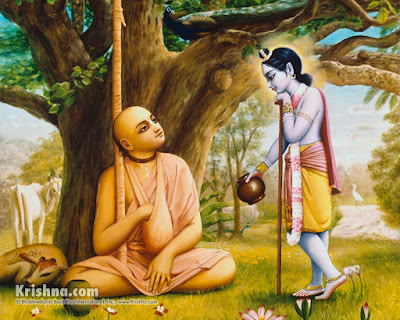One of the most amazing things that I heard about at our student orientation at Union Theological Seminary last fall was the existence of the "nun farm." Claire West, a Masters of Divinity student and one of the people behind the Edible Churchyard project at Union, told me about the Bluestone Farm community and the wonderful Sisters who were creating, harvesting, weeding, and living a simple yet grand experiment in spiritually-formed ecologically-sound living in upstate New York.
In my own anticipation to see what the "nun farm" was all about, I began to understand what communities like Bluestone were anticipating. Now, after having spent some actual time with the Sisters, in the dirt and sweat and joy, having left a little piece of my heart at the farm to make sure I return, this anticipation becomes tangible. I am becoming part of a group of seekers, both of the spirit and the land, who are shaping visions of community and civilization as we shift from industrial-technological civilization to ecological civilization.
Bluestone Farm is an anticipatory community, a community that by its very living example is anticipating the coming shape of our communities and civilization, a shape that we hope and work for in such a way that it will be in harmony with the shape of our Mother Earth. We hope, work, and anticipate that this shape of life will not become weakened by a romanticism or an idealism which doesn't have it's feet in the ground, its hands in the dirt, or which stands apart or aloof from the concerns of justice, which doesn't allow the voices of the marginalized, both human and non-human alike, from being heard, honored, and brought to the front.
The deep loving spiritual vision that the Sisters are trying to imbibe and present through their work on the farm is linked to a "new cosmology" of inter-being and inter-spirituality. They explain on their website:
The "new cosmology" is an important theological strand that weaves together great scientific discoveries of recent decades with the wisdom of mystics throughout the ages. The late Thomas Berry was perhaps the first to use this phrase in its theological context, and it has since been further developed by many others, including mathematician Brian Swimme and Sister Miriam MacGillis of Genesis Farm. The new cosmology confirms for our current day what Jesus and prophets from all religious traditions have long said — all living beings are sacred, we are all interconnected and creation is our home and our very being. Such a fantastic universe, with its great spiraling galaxies, its supernovas, our solar system, and this privileged planet Earth! All this is held together in the vast curvature of space, poised so precisely in holding all things together in one embrace and yet so lightly that the creative expansion of the universe might continue into the future. We ourselves, with our distinctive capabilities for reflexive thinking, are the most recent wonder of the universe, a special mode of reflecting this larger curvature of the universe itself. If in recent centuries, we have sought to collapse this larger creative curve within the horizons of our own limited being, we must now understand that our own well-being can be achieved only through the well-being of the entire natural world about us. The greater curvature of the universe and of the planet Earth must govern the curvature of our own being...
Thomas Berry, The Dream of the Earth
In particular, we offer our companion "travelers" opportunities to experience what it might mean to recognize and embrace our essential spiritual nature as we are transformed from consumers into citizens. We feel our path is one more way in which human civilization might be transformed for the benefit of all.
The vision for the future of the Bluestone Farm community as a whole includes an inter-spiritual center that would give space and facility to many different wisdom traditions to give of their hearts and to receive, to add their own seeds to the farm and their own angles of theological vision. The community also anticipates the shape of spirituality as we move into the dynamically uncertain waves of the 21st Century. They want to provide a integrative space for the spiritual and ecological seeker who may not necessarily be inclined to monastic life or other traditional religious and spiritual vocations. Yet it is the strength of the Sisters' vocation, based in what has worked and open to what will work, and the strength of the community they have built around their vocation, which provides a structure for the 21st Century person willingly or unwillingly immersed in the post-structural and the post-modern.
At the center of it all is the land and the cow and the spirituality of farming. The Sisters write:
With the passing of each season, on the farm and through the church calendar, we are coming to know how agricultural, environmental, and spiritual practices are truly intertwined. Our study and our prayers have moved us toward living more sustainably in the city, and toward building a new sustainable and energy-efficient convent with an architecture that allows us to live out our values. Our work to cultivate Bluestone Farm has given us farmers' hearts, which resonate and rejoice in the Scriptures' charge to tend the land, to give thanks for the harvest, and to see God's hand in every living thing.
Our call to heal the soil, live sustainably, reskill, and worship on this our plot of land is upheld by friends, neighbors, and Church in an ever-widening and deepening social geography. We find that our Community's desire to live in ever-increasing appreciation of the wonder of creation is shared widely, beyond the church, by small farmers, local food advocates, and environmentalists. It gives us great joy to share our understanding of the spirituality of farming with this growing network: our farm is at once a gift, a work, an invitation, and a prayer.
The philosophy the Sisters are developing in their work on the farm is based much more than just the obvious, much more than what can only be seen with our eyes or directly perceived by our senses. They have been developing biodynamic methods based on the teachings of Rudolf Steiner. They are convinced, as generations and generations before them, of the miraculous utility of cow manure. In my own small way, in my recovery from nature-deficit disorder, I have begun to develop a set of "soft eyes" which lets me see all the peas or asparagus I need to pick, and all the specific weeds I need to pull. In fact weeding, the eternal art, is a kind of Zen activity if one is able to simply disconnect from the urbanized, carbonized, and digitized whoosh that seems to be blowing like a gale through our minds constantly.
Here again are some images of life at Bluestone Farm which illustrate our values, joy, and abundance
A little baby cucumber enters into this mad, mad world
Beautiful broccoli waiting to be fully bloomed, harvested, cooked, buttered, and enjoyed
A mystical rainy afternoon on the Farm...but too much damn rain this summer!
Mashing comfrey leaves to make comfrey tea, a permacultural (and very smelly) prep designed to prevent bad bacteria, fungi, and pests from wreaking havoc.
Halfway to my nine-pound harvest of champagne currants
"Sister" Katie Ferrari uncovers a cow horn filled with cow manure that had been buried in the garden all winter.
This is a biodynamic technique, based on the theories of Rudolf Steiner, in which the energy-drawing design of the horn helps to maximize the nourishment potential of the manure
Sister Helena Marie removes the manure from the cow-horn
Cow manure, God's greatest invention
Sister Carol Bernice, the sacred cow-woman of Bluestone Farm, lovingly cares for her favorite girls, Jiffy and Mercy
Our worship at Bluestone Farm is like everything else we do, rooted in traditional wisdom but always seeking to integrate the threads of spirituality which we all share in the 21st Century. One of the most unique creations the Sisters have grown is the Celebration of Life eucharist, in which the traditional elements of communion, such as the bread and wine, are exchanged with bounties from the garden, such as fresh blueberries and buttermilk. The liturgy is also geared towards an understanding of the Earth as Eucharist. To whit:
Today we continue to participate in this dance of life, taking in and releasing energy just as our ancestors the first particles learned to do. Our duty and our joy is twofold: to speak the glad celebration of all creation, and to participate in the evolutionary journey of consciousness with mindfulness and awe.
We celebrate our own place in the community of Mother Earth, giving praise to the Holy Dream that transformed a cloud of hydrogen into stars, otters, and rosebushes. We remember that this miracle of transformation occurs because the journey of life in this Universe in deeply Eucharistic.
The worship at the Farm is also deeply inter-spiritual. In my time there we took part in a traditional Chinese tea ceremony led by our friends and Community Associates Kay and Anne from New Mexico, and I led a kirtan from the bhakti-yoga tradition of India. The community also incorporates elements of Sufi zikr.
The bell that calls us to worship in the chapel
Our chapel space, prepared for a traditional Chinese tea ceremony
The Divine Mother
and Divine Mother Earth
Our Summer Solstice drum circle
Anne and Kay bang the drum slowly
as does Matthew
To everyone at Bluestone Farm, all of my love, blessings, and gratitude for opening your home and making me feel at home. To any ecologically-minded spiritual seekers, worshipers of Divine Mother Earth, any time spent with the Sisters is an experience you will cherish.































